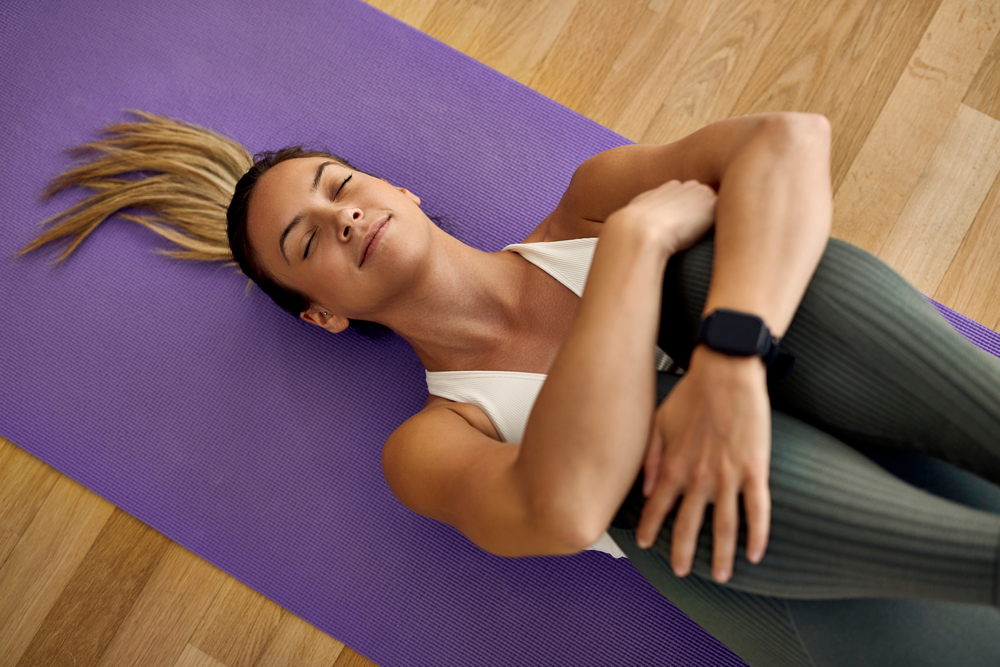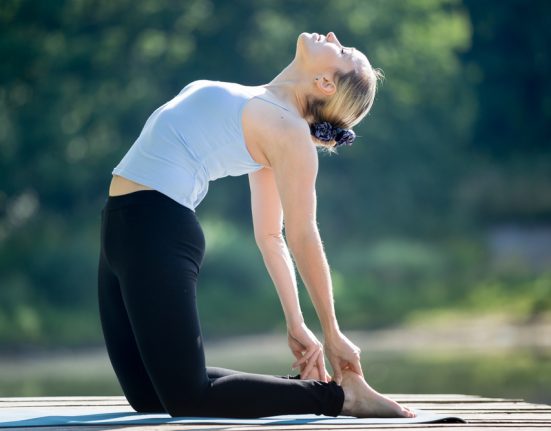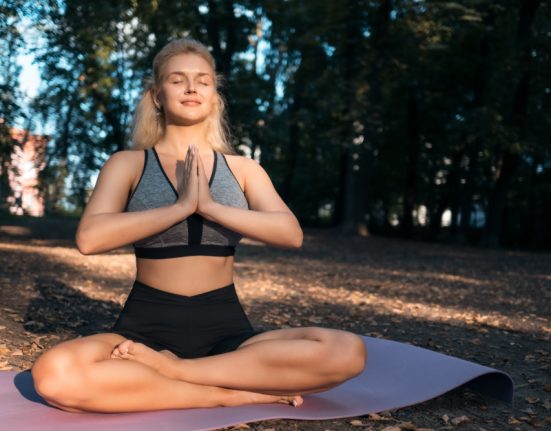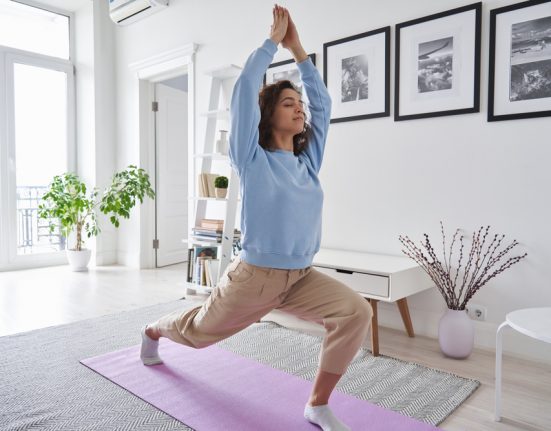These postures are designed to help you calm your body down and quiet your mind, so you can relax and get to sleep with ease. Try them just before hitting your pillow.
The end of the day often comes too fast, and many of us may find ourselves not quite ready to settle down. There may be those last-minute emails to send, dishes to do, others in the household who need your attention, or anxieties about tomorrow’s to-do list. All of that buzz makes it tough to drift off to sleep.
That’s where before-bed yoga comes in. The gentle physical movement is relaxing itself, and the principles yoga is founded on — gratitude, self-compassion, and contentment — when practiced before bed can be calming, too, helping to promote sleep, says Carol Krucoff, a yoga therapist at Duke Integrative Medicine in Durham, North Carolina.
“Restorative yoga is becoming more popular, particularly since COVID-19 has people on edge,” says Krucoff. One review looked at 19 studies with nearly 2,000 women with sleep problems and found that, overall, a yoga practice (at any time of the day) improved sleep quality compared with not practicing yoga.
Before you try these poses, set the stage for sleep by centering your mind. Krucoff recommends practicing the “Three Good Things” exercise. “The intention is to think about three good things that happened to you that day. It can be as little as having a really great cup of coffee that morning,” she says. (For more details, find this how-to from the Greater Good Science Center at the University of California in Berkeley.) It helps alleviate worry and get you into a positive mindset that helps you relax.
Then try these five gentle poses and exercises to get you all set for sleep:
1. Yoga Belly Breathing
“If you can only do one thing to prepare yourself for sleep, take a few minutes to work on your breath,” says Krucoff. What she’s referring to is the relaxed abdominal breath, also known as the “yoga belly breath.” During the day, you are likely in the habit of breathing shallowly from your chest, but deeper breaths fill the lungs completely. “This triggers a cascade of physiological changes. Your heart rate slows, your blood pressure decreases, and muscle tension eases,” she explains.
How to Do It Lying down, put one hand below your belly button. Breathe in through your nose to fill your lungs (your belly should rise). Breathe out through your nose. Repeat for a few minutes.
2. Range of Motion Sequence
Here, you’ll take your joints through their full range of motion. “This is something that’s quieting, releases tension and tightness, and is convenient because it can even be done lying down in bed,” says Krucoff. What’s more, it helps bring attention to body sensations, making you consider not just whatever happened with your family or at work, or what was on the news over the course of the day, but also how your body actually feels. Are certain muscles sore?
Are certain muscles tired? “Many of us spend much of our day in our heads,” Krucoff says. “This practice guides you back into your body, which is a good way to prep for sleep.”
How to Do It Lie down on the floor or in your bed. Circle your ankles. Extend your legs out long then bend your knees. Lift and lower your hips to make circular movements. Bend your elbows, then extend your arms long at your sides. Shrug and circle your shoulders. Repeat as needed and as feels good.
3. Knee Hug
If you have back issues, the knee hug will feel particularly nourishing, Krucoff says. In fact, low back pain is one of the most common reasons for seeing a doctor; it also keeps people out of work, according to the National Institute of Neurological Disorders and Stroke. Working hunched over at a desk all day can cause aches. This pose will relieve it.
How to Do It Lie down and hug one or both knees into your chest. (Whether or not you do one or both depends on your physical abilities.) If you can hug both knees into your chest at the same time, rock from side to side to massage your spine.
4. Shoulder Shrug
It’s common to hold tension in your neck and shoulders, says Krucoff. It’s even more common for tightness and pain to creep up here if you spend your day working at a computer or staring at your smartphone.
How to Do It Sit on your bed, sitting up straight with good posture. Inhale and bring your shoulders up to your ears and squeeze your arm and shoulder muscles tightly. Exhale and release your shoulders, pulling your shoulder blades downward. Repeat a few times.
5. Corpse Pose
If you practice yoga, you know this as Savasana, which is the final pose of class. “It looks extremely easy to lie down and do nothing, but it’s among the hardest poses to master because it requires you to release all physical and emotional tension and let go of mental thought,” explains Krucoff. But no need to stress about getting Savasana right: Just lie down, be still, and try to not think about anything in particular and it will help you relax. Krucoff calls it “relaxed alertness” — which might sound contradictory but is really about noticing whatever thoughts and feelings do come up without dwelling on any one particular one.
How to Do It Lie down with your arms at your sides, palms up and relaxed. Close your eyes and focus on the rise and fall of your breath. If you have trouble with intrusive thoughts, acknowledge their presence and picture them floating away.









